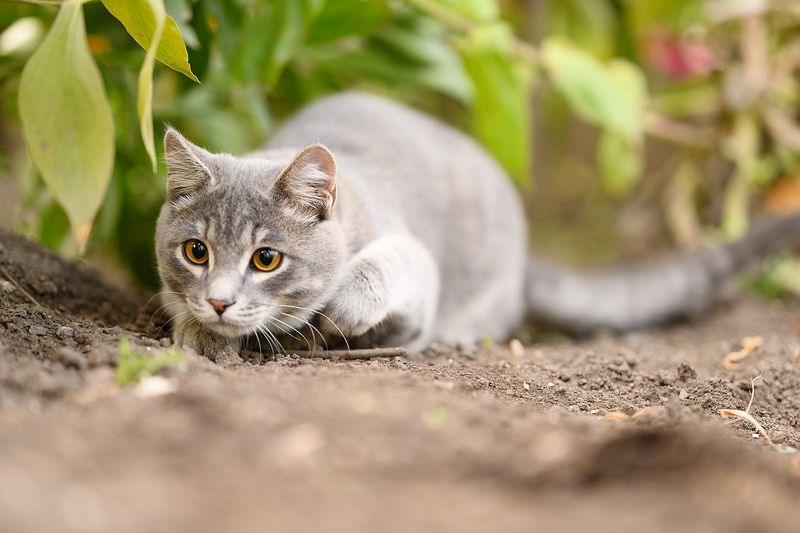📖 Table of Content:
Cats are known for their mysterious behavior and sharp senses, but have you ever wondered how your feline friend perceives the world?
While their gaze might seem otherworldly, their vision is a finely tuned marvel of evolution. From seeing in near darkness to their unique perception of colors, a cat’s eyesight is designed for survival, hunting, and play.
There are many interesting aspects to this subject, but we have chosen 5 fascinating facts about how cats see the world that will blow your mind.
1. Night Vision Superiority
Cats are known for their impressive night vision, a trait that sets them apart from many other animals. This ability is primarily due to a higher number of rod cells in their retinas, which are sensitive to low light levels. As a result, cats can see in conditions that are six times darker than those a human can navigate.
This night vision is not just about seeing in the dark; it also allows cats to detect even the slightest movements at dusk and dawn, when their prey is most active. The reflective layer behind their retinas, called the tapetum lucidum, further enhances this ability by reflecting incoming light back through the retina.
In essence, a cat’s ability to see in the dark is akin to having built-in night vision goggles, allowing them to stalk and pounce with precision. This trait has evolved to maximize their hunting efficiency and survival.
2. Wider Field of View
Cats have an impressive field of vision, enabling them to see a wide area without moving their heads. With a field of view of approximately 200 degrees, compared to the human average of 180 degrees, cats can easily scan their surroundings.
This broader view is particularly advantageous for detecting potential threats and spotting prey. The positioning of their eyes on the head contributes to this wide-angle vision, allowing them to swiftly react to changes in their environment.
While a cat’s peripheral vision is not as clear as its central vision, it is highly sensitive to motion, which is crucial for hunting. This wide field of view and motion detection capability means a cat can always stay alert, even when appearing relaxed.
3. Selective Color Perception
While cats don’t see the world in black and white, their color perception is quite different from humans. Cats are dichromatic, meaning they primarily see shades of blue and green. They have fewer cones, the color-detecting cells in the retina, which limits their ability to perceive the full spectrum of colors.
This selective color vision means that while a bright red rose might appear vibrant to us, it may seem more muted or even greyish to a cat. This adaptation is thought to help them focus more on movement and contrasts, which are vital for detecting prey.
Despite this limitation, cats have an excellent ability to distinguish between different shades of grey, which complements their superior night vision and aids in spotting subtle movements.
4. Depth Perception Skills
A cat’s depth perception is another fascinating aspect of its vision. Cats are equipped with binocular vision, which means both eyes work together to create a single image. This ability is crucial for accurately judging distances, especially when hunting or navigating complex environments.
Compared to humans, cats are better at gauging distance and speed, which helps them in timing their jumps and pounces with remarkable precision. Their eyes are set closer to the front of their head, enhancing their depth perception abilities.
However, this comes at a slight trade-off: cats have a narrower range of focus than humans. Yet, this limitation is minimal compared to the advantages their binocular vision provides, ensuring cats remain adept hunters and agile climbers.
5. Unique Focus Range
Cats have a unique focus range, which gives them an edge in certain situations. While humans can see clearly at various distances, cats are nearsighted. They see best at distances of 6 to 20 feet, which is optimal for stalking prey.
This nearsightedness is complemented by their extraordinary peripheral vision and motion detection, allowing them to track objects effectively even when they are further away. Cats rely on other senses, like hearing and smell, to complement their vision when objects are beyond their focus range.
Interestingly, this focus range suits their predatory lifestyle perfectly, enabling them to concentrate on targets within their immediate vicinity. This adaptation ensures that while they may not excel at long-distance vision, their hunting skills remain finely tuned.





